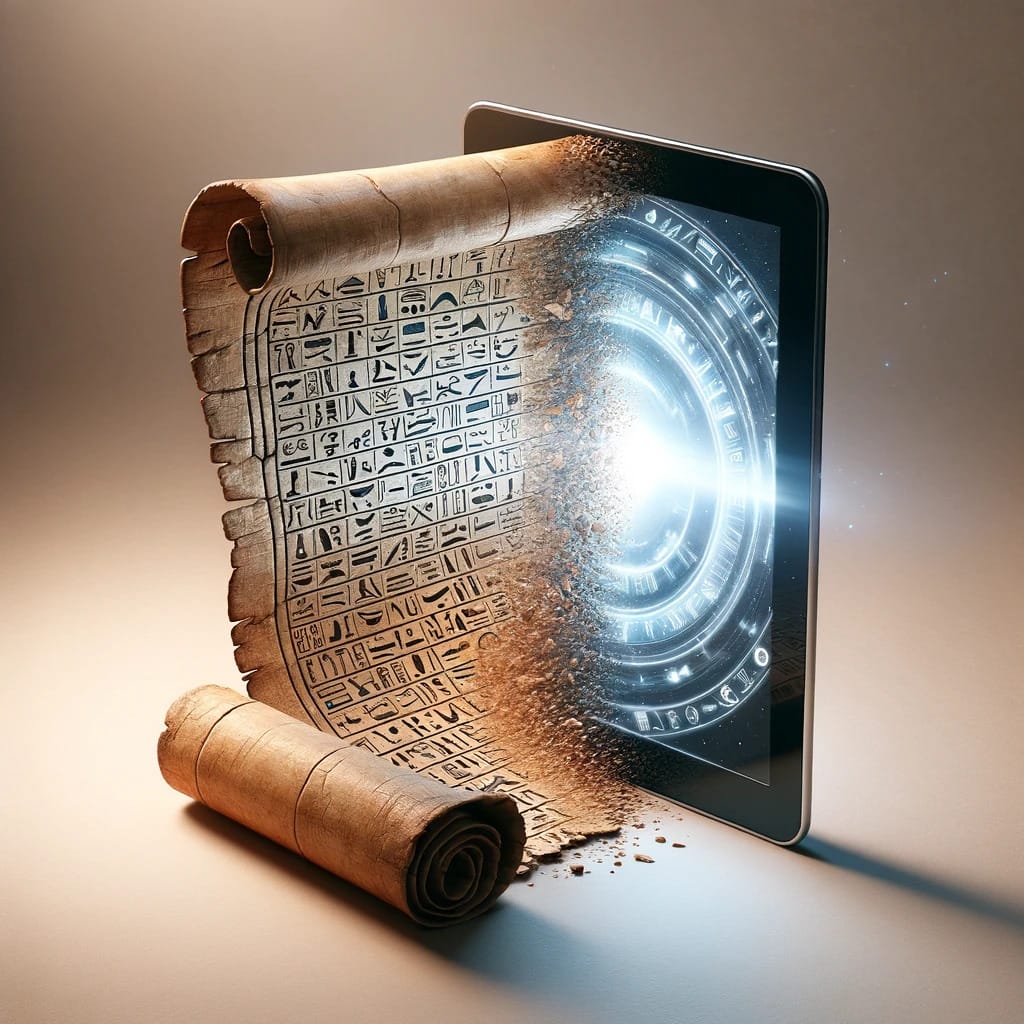From Ancient Scrolls to Printing Presses
Our story begins millennia ago, in the age of the Pharaohs, where Egyptian scribes meticulously translated texts on papyrus. Fast forward to the 15th century in Germany, and we encounter Gutenberg’s revolutionary printing press. These historical milestones set the stage for our modern-day interpreting landscape, highlighting our enduring quest to perfect the art of communication.
In our digital era, advancements like video remote interpreting (VRI) and machine translation are smoothing out the challenges interpreters face. Consider the ‘Telephone Game’ scenario, where messages can become distorted through multiple interpretations. While amusing in casual settings, in our profession, accuracy is paramount. Technology has provided tools to mitigate such risks, yet it’s essential to remember the irreplaceable value of our human skills.
The Human Touch in a Digital World
Despite technological advancements, the essence of our profession lies in our ability to empathize and navigate complex human communication. This human touch distinguishes us from machines. The recent shift to remote work, propelled by the pandemic, has underscored the importance of adaptability in our field. It’s highlighted how we can maintain connections across the globe, blending technology with our innate human skills.
Embracing the Future
Staying abreast of technological advancements is crucial. Developments in AI and neural machine translation (NMT) promise to enhance our capabilities significantly. While the future may bring transformative changes, the core of our profession will always be rooted in the human connection.
A Lifetime of Learning
As we stand at the intersection of tradition and innovation in the interpreting world, it becomes clear that our purpose is not just about adapting to new technologies; it’s about shaping them to enhance our profound human connection. The future of interpreting, lit by the glow of screens and powered by the pulse of digital progress, will always need the heartbeat of human insight. We, as interpreters and translators, are not just witnesses to this evolution; we are active participants, continually redefining the boundaries of communication. Our role is pivotal – blending the wisdom of the past with the possibilities of the future, ensuring that every voice is not just heard, but truly understood.
